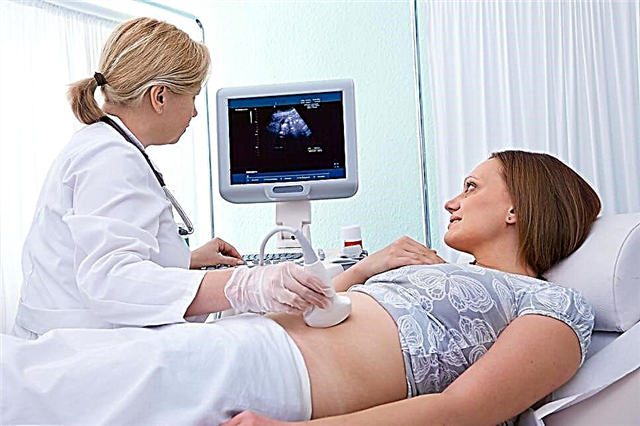
The platelet count during pregnancy is of great importance. In blood tests, the number of these platelets is determined in order to timely diagnose various disorders in the expectant mother that can be potentially dangerous for both the health of the woman and her baby.
What should be the rate of platelets during the period of gestation of the crumbs and what deviations can talk about, we will tell in this article.

What it is?
It is not by chance that platelets are called platelets. They literally close the space with their own bodies through which the body can lose a large amount of blood when injured.
A few decades ago, it was believed that the function of platelets could be considered exhausted. However, modern doctors and scientists have found that, in addition to creating a blood clot, platelets contribute to the healing and repair of tissues after injury, wound or surgery. To do this, they secrete special substances into damaged tissues, which are called growth factors.
Platelets are involved in blood clotting by being part of the primary plug that closes the wound. In addition, their surface accelerates plasma coagulation processes.

Additionally, platelets take on the role of immune helpers. They contribute to the immune defense by interacting with specific immune cells - antibodies.
Lack of platelets in the blood, as well as excess, are conditions that are dangerous to human life. In this case, not only the number of platelets plays an important role, but also their functionality. Sometimes, with a normal number of cells with reduced function, insufficient aggregation is observed, and blood clotting is impaired.


Analysis
A separate analysis for the content of platelets is not prescribed for pregnant women. Their number is well determined in the general blood test, which is given repeatedly during the carrying of the baby. Preparation for this test is not required; it is completely unnecessary to take it on an empty stomach.
If problems with platelets are detected, a woman may be prescribed additional tests that will help answer the question of which of the cellular functions is insufficient or excessive.
It can be a comprehensive blood coagulation test, a coagulogram.

Standards for pregnant women
The blood of a healthy adult contains approximately 180-360 * 10 ^ 9 cells per liter of platelets. However, during pregnancy, their number is understandable and reasonably falls - the amount of circulating blood in the expectant mother increases, and therefore the concentration of platelets decreases.
In the third trimester the number of platelets in the blood of the expectant mother reaches its minimum. At the same time, the ability of the plates to bind to each other and participate in aggregation increases. Thus, the body of a pregnant woman prepares for the upcoming birth, because the most important thing is to prevent severe bleeding during the birth of a new person.
For a pregnant woman, the average volume of platelets at the level of 140 to 340 thousand / μl with an aggregation of 40 to 60% is considered the norm.


Normal platelet concentration during pregnancy - table:
The number of platelets at 12 weeks of pregnancy, exceeding 180-190 thousand / μl, is considered as a high content of platelets, and indicators below 110-125 at 34-36 weeks of pregnancy are regarded as an insufficient number of platelets.

Possible violations - causes
The composition of blood is not constant, its quantitative and qualitative composition directly depends on a variety of reasons and factors, both external and internal. Therefore, an increase or decrease in platelets in the blood of the expectant mother is not regarded as an independent disease, but is considered as a vivid symptom that requires more detailed investigation - why this happened and how to fix it.
An increase in platelets leads to a phenomenon that people have "thick blood"... This is fraught with the occurrence and separation of blood clots and the possible death of the mother. The fetus receives less nutrients, because the blood flow in the mother's body is slowed down.
Low platelet counts pose a threat of bleeding, which will be very difficult to stop. This is especially dangerous during childbirth, at the time of the birth of the placenta.

Increased content
We are talking about an increased level of platelets if their number exceeds 380 - 400 thousand / μl. In medicine, this phenomenon is called thrombocytosis.
Many expectant mothers may wonder why, with an upper threshold of 320-340 thousand / μL, thrombocytosis is diagnosed only closer to 400 thousand / μL. Everything is very simple - doctors leave a free "corridor", which may be due to individual physiological characteristics, because the body of each pregnant woman prepares for childbirth with its own "nuances". Therefore, a platelet value of 370 thousand / μl at 36 weeks of gestation will not be considered thrombocytosis and will need any treatment.
Thrombocytosis in expectant mothers is often associated with toxicosis. Nausea and vomiting, which often accompany the first trimester, and sometimes return in the third, lead to fluid loss by the body, which in turn immediately affects the composition of the blood - it thickens, the number of platelets-platelets in it increases.

If there is no toxicosis and vomiting, and the woman still has high platelets, this can be due to a large number of reasons:
- Lack of fluid. Some of the expectant mothers are so afraid of edema that they limit fluid intake to a critical level. The same reasons can cause an increase in platelets in a pregnant woman in the summer, when it is hot outside and sweating is increased.
- Infections. Viral and bacterial ailments also cause a rise in platelets in the blood. Thrombocytosis can also be caused by fungal infections.
- Chronic diseases. During pregnancy, the load on all organs and systems increases. If a woman has chronic diseases, then their exacerbation is possible. It will also cause a rise in platelets, which are very sensitive to any changes in the body.
- Anemia. A lack of hemoglobin in the blood during pregnancy is not so rare. But platelet count is primarily affected by anemia associated with iron deficiency.
- Oncological diseases. An increased level of platelets often accompanies malignant tumors and processes, especially in the hematopoietic system.
- Medicines. An increase in the number of platelets is influenced by diuretics or hormonal agents that the expectant mother could use.

A woman may not experience any pronounced symptoms of thrombocytosis, however, in some cases, symptoms such as spontaneous occurrence of hematomas - even with a light touch, a woman may have bruises. Sometimes a small vascular rash on the skin may appear, it is very similar in nature to a small "star" meningococcal rash.
A woman can guess about blood problems by such rather universal symptoms as bleeding gums... Epistaxis may occur. Elevated platelets can cause changes in blood pressure, tingling and numbness in the fingertips, pallor of the skin, shortness of breath, and headaches.

Reduced content
A low platelet count is a decrease in their number below the mark of 140 thousand / μl. 120-122 thousand / μl is moderate thrombocytopenia. If there is a drop below 110 thousand / μl, this is a pronounced trobocytopenia.
In the early stages, it is dangerous due to miscarriage, and in the late stage - massive internal or external bleeding.


The reasons that can cause a decrease in platelets are also manifold:
- Allergic reaction. Any allergy causes a whole cascade of reactions in the body, if a woman has an allergic tendency. A decrease in the level of platelets is just one of the changes in the composition of the blood. The level of eosinophils will help doctors establish the truth. With allergies, it also turns out to be increased.
- Avitaminosis. Lack of vitamins and necessary minerals in the body of the expectant mother, insufficient nutrition can also cause thrombocytopenia. Especially often, a decrease in platelets develops against the background of a lack of folic acid and vitamin B 12.
- Endocrine Disorders. Hormonal imbalances can cause many complications during pregnancy. Especially often, a drop in platelets develops against the background of a lack or excess of thyroid hormones.
- Blood clotting disorders. The number of platelets may decrease due to some deviations in different clotting factors. So, a lack of the enzyme thrombin leads to an excess of platelets, and an excess of fibrinogen leads to their lack.
- Bone marrow problems. Blood composition changes due to bone marrow hypoplasia or cancers that affect the bone marrow.
- Medicines. More "liquid" blood becomes due to the use of antibiotics and diuretics, as well as from antihistamines and pain medications.

Thrombocytopenia is confirmed by laboratory tests, but an attentive woman herself can guess about it by a number of characteristic symptoms, among which the main criterion is a blood clotting disorder.
At the slightest cut to a woman hard enough to stop the bleeding, she often has bruises, the origin of which the expectant mother herself cannot remember, as well as nosebleeds.
Women in an "interesting position" with a shortage of platelets in their blood may develop a weak bloody "daub" from the genitals, which many mistake for the threat of termination of pregnancy. It can last for several days, or it can remain unchanged for weeks, accompanying almost the entire pregnancy, if the expectant mother is not provided with medical assistance aimed at eliminating the cause.


Treatment
With high platelets
Doctors recommend treating thrombocytosis in a hospital setting, because a woman can be prescribed medications - angiagregants and anticoagulants, which are poorly combined with bearing a fetus.
Dosages are selected on an individual basis, in a hospital setting, doctors are able to foresee all possible risks.
With a slight excess in drugs, there is no need, it is quite enough to simply change the diet of the expectant mother.
On the table of a woman with high platelets must necessarily be foods that have a beneficial effect on blood viscosity, reducing it. These are vegetable oil, fish oil, tomato juice, onions, cranberries, green apples, green vegetables, buckwheat porridge, kefir and cottage cheese, fish caviar and seafood.
Hyperaggregation needs in the correct drinking regime. A woman needs to drink at least 2 liters of liquid per day. Pure drinking water, green tea, homemade fruit drinks are allowed.
Before accepting such a regime as a rule, you should definitely consult with your doctor, because with gestosis and a tendency to edema with fluid, you should be more careful. In this case, the doctor prescribes an individual drinking regimen, and the amount of fluid required per day may differ from the average values.
It is better not to use folk remedies for pregnant women.despite the fact that they help to thin the blood quite effectively. At home, a very difficult task is to correctly calculate the dosage of medicinal plants.
Even the most harmless grasses and inflorescences, if the dosage is not observed and their side effects are ignored, can negatively affect the condition of the fetus and the woman herself.


With a lack of platelets
With a slight decrease, especially if it was due to a previous infection, for example, influenza or SARS, treatment is not required. Platelet counts usually return to normal after the woman recovers. In the same way, they cope with thrombocytopenia caused by medications - they simply cancel the drugs that caused such an effect.
Problems with internal organs - kidneys or thyroid gland - should be resolved by specialized doctors. A woman needs consultations of a nephrologist and an endocrinologistso that she is given the correct treatment.
If a biochemical blood test confirms that the reason for the fall in the number of platelets lies in the lack of certain vitamins, the expectant mother will be prescribed vitamin complexes.
Coagulant drugs that cause blood thickening are also advisable to use only in a hospital under the supervision of a doctor. Usually, such a need arises in the last trimester of pregnancy, when a woman should be prepared for childbirth or a caesarean section.
In other cases, it is enough to adjust the lifestyle of the pregnant woman and change her diet. The daily menu should include bananas, apples, chicken eggs, meat and fish, herbs and legumes.
With significant thrombocytopenia, in which the body itself produces antibodies against platelets, the woman is hospitalized. She is shown taking corticosteroid hormones, medication suppression of immunity, as well as replacement blood transfusions if the level of platelets drops below a critical level, at which there is a serious danger to life. The gynecologist helps to maintain such a pregnancy doctor-hematologist.
For more information about the level of platelets in the blood and the reasons for its fluctuations, see the next video.



